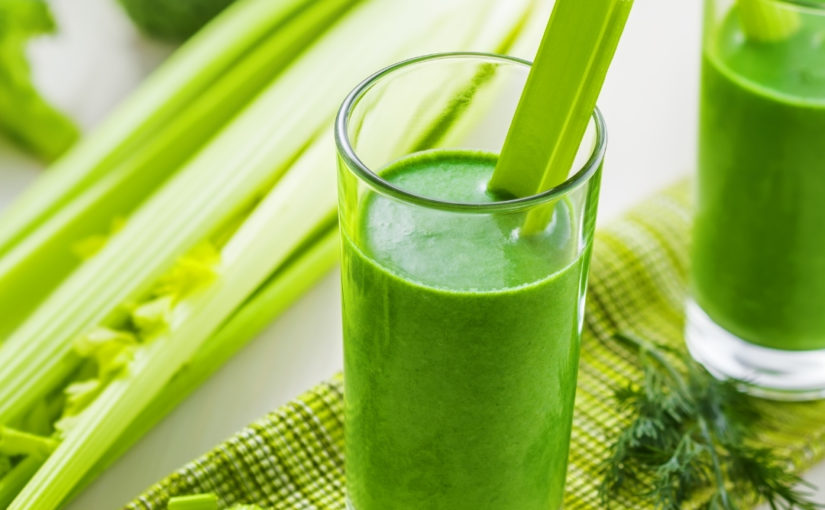Fact or Fiction? Debunking the latest health phenomenon that is celery juice.
Celery juice is just the latest buzzword to hit the health and fitness landscape. With little interest being shown previous to 2019, it has fast become the next instagramable health fad.
Perhaps you’ve seen it scrolling through Instagram (with over 100,00 results when searched) or being recommended by any number of celebrities from Gwyneth Paltrow to Jennifer Aniston. This bright green and leafy tasting drink is being downed by the glassful with it being hailed as a miracle cure for many ailments from acne to inflammation and psoriasis. As with any new wellness trend on the market, it’s always important to do some research before you jump on the bandwagon. So before you buy a juicer here are some myths and facts behind celery juice.
It is worth noting that Mr Williams is not a licenced nutritionist nor a medical doctor.
In order to reap the full rewards, celery should be juiced, pulp removed and drunk by itself. A full 16 ounces are drunk on an empty stomach first thing in the morning at least 30 minutes before breakfast. The supposed benefits include helping improve digestion, autoimmune disorders, psoriasis, acne, chronic fatigue syndrome, acid reflux, the shingles virus, strep bacteria and weight loss.
Much of the evidence supporting these claims are anecdotal stories passed through Instagram stories or blogs.
As mentioned by Michele Berman (M.D) a Pediatrician writing for HealthyButSmart.com, there are only a handful of articles in PubMed that specifically mention celery juice. None involve human subjects. With regards to celery itself, there are 1109 articles related to celery in the scientific literature, with only 14 clinical trials in comparison to 3000 publications related to carrots, including over 90 clinical trials (at the time of the article being released)
Can celery juice help with digestion and bloating?
While celery in itself is a good source of potassium, vitamin K, and flavonoids (compounds that have powerful antioxidant and anti-inflammatory properties) these are often in minute quantities The vast majority of celery’s benefits are derived from its high percentage of water content (95%). While the micronutrients may be beneficial, for example, one stalk provides about 15% of our daily vitamin K, improved digestion or decreased bloating is often the result of the high percentage of plain old water! It may be that the positive effects of celery juice are being mistakenly perceived as needing to drink a few extra glasses of water. Perhaps skip purchasing the pound of celery needed to make the juice and focus on making sure you are hydrated with a daily 4-6 cups of water
Does celery juice help with detoxing?
Let’s establish a firm basis before we dive into the claims of celery juice. While detoxing is still commonly perceived as a way to remove toxins or heavy metals, it is clear that this myth is quickly becoming unravelled. Any detox that claims to cleanse the intestines and body of waste products for good health is fiction.
Much of the research highlighting detoxes as a fad stems from the fact that your body comes prepared to filter waste with its very own built-in detox machine: your liver. Indulging in a juice cleanse can be at best expensive and worst seriously harm the functioning of your kidneys and liver.
Does celery juice help with our gut?
A key reason celery juice health benefits are heavily debated is that when celery is juiced, all the essential fibre that improves intestinal health is lost. Our gut microbiome is also an essential part of our well being and fibre is the primary fuel source for many of the microbes. Removing the fibre from the celery prevents your gut from receiving an additional boost.
Not to mention the fibre is well known for making you feel fuller for longer as it takes longer to break down. Drinking celery juice may eradicate these steps and lead to feelings of hunger or cravings.
Looking for tips on how to improve your digestion? Take a look at our previous blog post.
Does Celery juice help lower inflammation?
Celery contains specific flavonoids such as phytosterol that have been shown to help decrease inflammation. When the celery is juiced, the fibre is stripped and often the helpful flavonoids with it.
While celery itself helps with inflammation, there have been no studies to further positively promote that the juice does. If you have a craving for celery and looking to retain the most benefits perhaps munch on a few sticks as an alternative to the juice. Better yet, why not snack on a variety of fresh veg like carrot and cucumber with fresh hummus with the Fruitful Day’s Veg Delight Platter
While the evidence is lacking, it doesn’t mean you need to put a hold on all future celery juice drinking. If you love the taste and feel the benefits, then keep gulping it down. Just keep in mind that it is highly under-researched and may not be the miracle cure you were looking for.
It is also helpful to remember if you do want to add juices to your diet, there are a few things you can do to make sure you consume juices in the healthiest way possible -just keep in mind with juice a little goes a long way! Introduce a variety of fruit and veg into your juice or smoothie to add additional micronutrients (take a look at our range here) or make up for the essential fibre loss that comes with juicing elsewhere in your diet by snacking on whole fruit and veg (take a look at one of our easy-to-go boxes).
